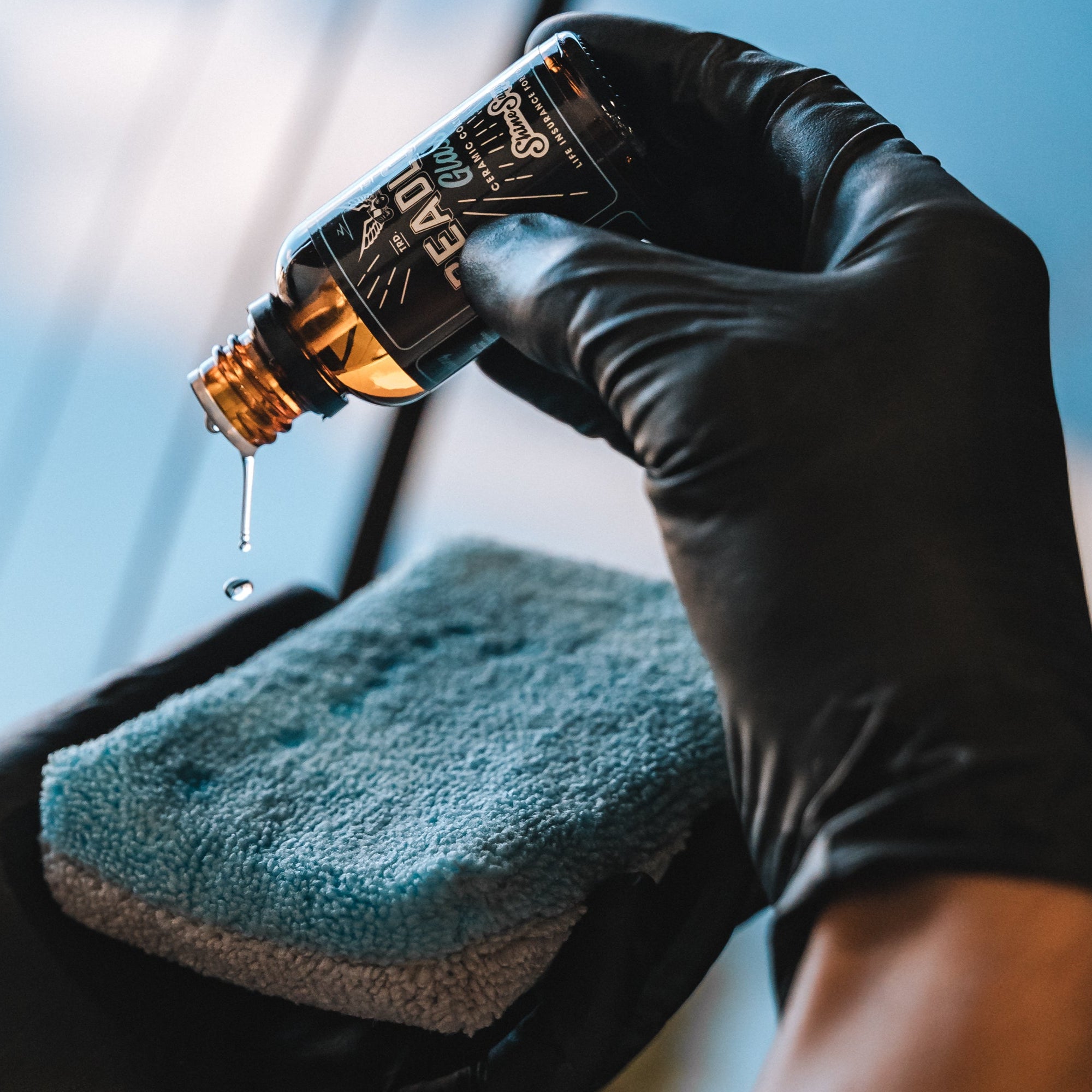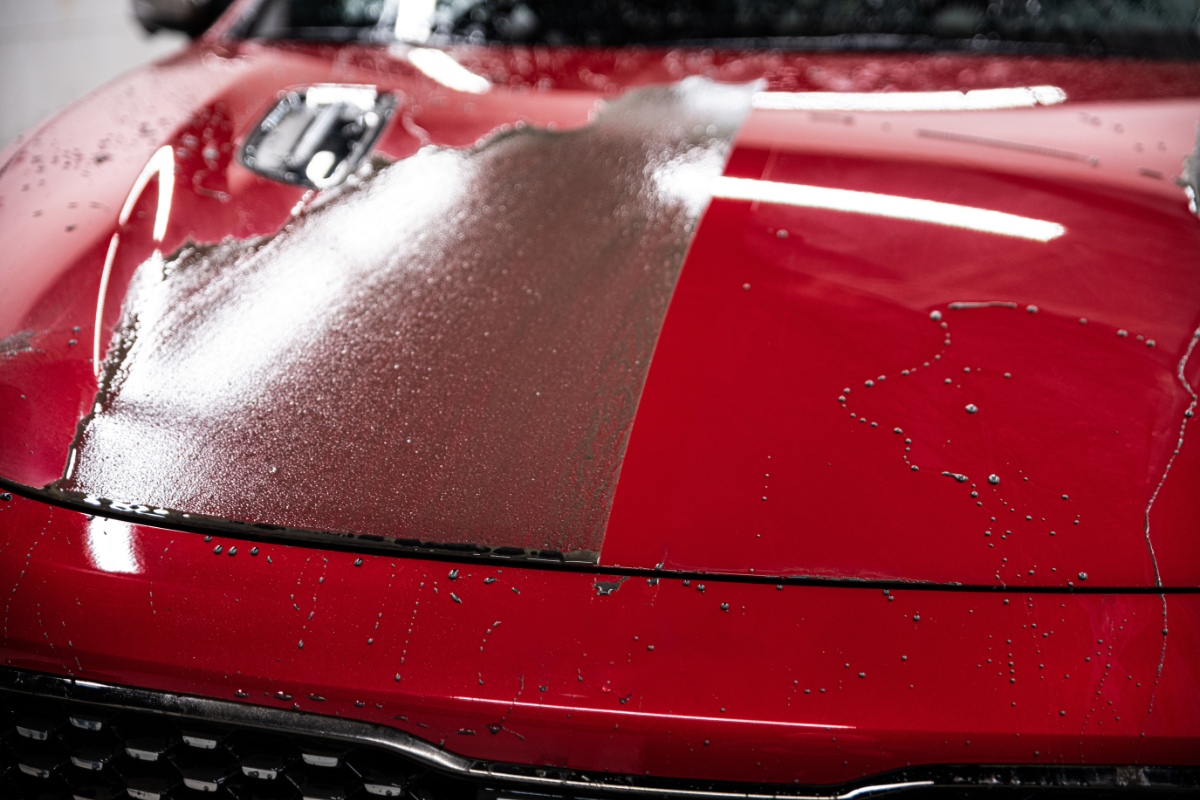Get professional auto detailing to refresh your vehicle’s beauty.
Get professional auto detailing to refresh your vehicle’s beauty.
Blog Article
A Comprehensive Overview to the Kinds Of Ceramic Finishing on the Market
Ceramic finishes have arised as a pivotal remedy throughout different sectors due to their unique properties and applications. From silica-based formulations known for their toughness to crossbreed options that combine numerous advantages, the options available can be frustrating. Recognizing the subtleties of each type, including their particular benefits and optimal use instances, is important for making notified decisions. As we explore the distinctive qualities and applications of these coatings, the ramifications for performance and longevity come to be progressively apparent, questioning regarding which kind may best fit your demands.
Comprehending Ceramic Coatings
Ceramic layers are innovative safety solutions that have gotten popularity in numerous sectors, particularly in automobile and aerospace applications. These finishings include a liquid polymer that, when treated, creates a durable, hydrophobic layer on the surface area of the substratum. This layer supplies improved resistance to environmental pollutants, UV radiation, and chemical direct exposure, thereby expanding the life and aesthetic charm of the underlying material.
The essential component of ceramic coverings is silica, which adds to their firmness and toughness. The application procedure typically includes surface area preparation, application of the finish, and treating, which can be accomplished via warm or UV light. As soon as healed, ceramic finishes exhibit phenomenal bonding residential properties, allowing them to stick strongly to a selection of surfaces, consisting of metals, plastics, and glass.
In enhancement to their safety attributes, ceramic coverings additionally use ease of upkeep. Their hydrophobic nature reduces the adherence of dust and gunk, making cleaning easier and less constant. In general, the fostering of ceramic finishes stands for a substantial innovation in surface protection innovation, supplying both practical and visual advantages across several fields.
Sorts Of Ceramic Coatings
Various sorts of ceramic layers are readily available, each made to meet particular performance requirements and applications - Auto Detailing. The most typical types include:
Silica-based Coatings: These finishings primarily include silicon dioxide and are known for their longevity and chemical resistance. They are extensively utilized in automobile and commercial applications.
Titanium Dioxide Coatings: Distinguished for their photocatalytic residential properties, titanium dioxide layers are commonly used in environments where self-cleaning and antifungal buildings are preferable, such as in building materials and auto finishes.
Zirconia Coatings: Identified by their high-temperature stability and thermal resistance, zirconia coatings are utilized in applications such as generator engines and high-performance vehicle parts.
Alumina Coatings: Exhibiting exceptional firmness and thermal security, alumina coverings are often used in wear-resistant applications, consisting of reducing devices and commercial equipment. - ceramic coating sarasota
Hybrid Coatings: Integrating the residential or commercial properties of numerous materials, crossbreed finishings use enhanced efficiency features, making them suitable for one-of-a-kind and demanding applications.
Each kind of ceramic coating offers distinctive objectives, enabling users to choose the most ideal solution based upon specific environmental conditions and efficiency needs.
Benefits of Ceramic Coatings
Ceramic coverings, in specific, deal many advantages that make them significantly preferred among producers and consumers alike. These finishes are immune to scratches, chemicals, and UV rays, guaranteeing that the underlying surface area continues to be safeguarded over time.
Along with sturdiness, ceramic layers provide excellent hydrophobic residential properties, enabling easy cleaning and maintenance. This water-repellent nature decreases the adherence of dust, crud, and various other contaminants, which can prolong the visual allure and capability of the surface area. Ceramic layers can considerably improve thermal resistance, making them perfect for applications that withstand high temperatures.

Application Process
When using ceramic finishings, a like it meticulous strategy is necessary to achieve ideal outcomes. The application process commonly starts with extensive surface preparation. This entails washing, sanitizing, and polishing the surface area to eliminate all pollutants, consisting of dust, look these up grease, and prior waxes or sealants. A tidy surface makes certain correct attachment of the finishing.
As soon as the surface area is prepped, the next step is to apply the ceramic layer. This can be done using an applicator pad or a microfiber fabric, ensuring even insurance coverage. It is important to operate in little areas to keep control and stop early treating. The covering ought to be applied in slim layers, as thicker applications can cause unequal coatings.
After application, the finishing needs a certain treating time, normally ranging from a few hours to a complete day, depending on the product. Complying with these actions carefully will make best use of the efficiency and longevity of the ceramic layer, giving a durable protective layer for the surface area.
Maintenance and Long Life
To guarantee the longevity and effectiveness of a ceramic coating, routine maintenance is crucial. Ceramic coverings, understood for their longevity and safety qualities, call for particular treatment routines to optimize their lifespan and efficiency. The initial step in maintenance involves regular cleaning with pH-neutral soap, preventing severe chemicals that can weaken the finish. It is a good idea to clean the car routinely, preferably every two weeks, to stop the accumulation of impurities that could jeopardize the layer's stability.
Along with routine cleaning, regular inspections are essential. Seek indicators of wear or damages, such as hydrophobic buildings lessening or surface imperfections. If essential, a light gloss may be related to rejuvenate the covering without removing it away.
In addition, the application of a booster spray can boost the layer's hydrophobic effects and restore its gloss. This is especially beneficial for coverings that have been in usage for a prolonged duration. Ultimately, by adhering to these upkeep practices, one can considerably prolong the life of a ceramic covering, making certain that it remains to offer optimal security against ecological see here variables and maintain the aesthetic charm of the car.
Final thought

Report this page